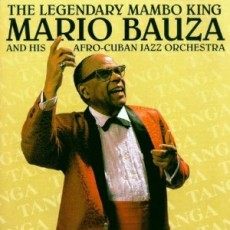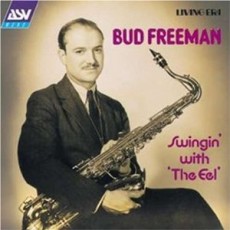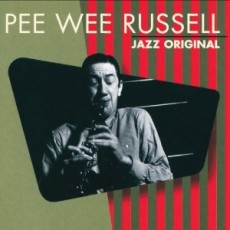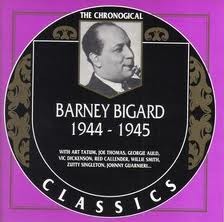
Daily Dose Of Jazz…
Sidney Bechet was born on May 14, 1897 in New Orleans, Louisiana to a wealthy Creole family. At age six he picked up his brother’s clarinet, learned to play by on his own, eventually playing at a family birthday party exhibited his new talent. Later he would study with renowned Creole clarinetists Lorenzo Tio, Big Eye Louis Nelson and George Baquet. He would be found improvising jazz in many New Orleans ensembles led by John Robichaux, Bunk Johnson and King Oliver.
By the time he was 17 Bechet was touring as far north as Chicago and two years later landed in New York playing with Marion Cook’s Syncopated Orchestra. This led him to Europe and the Royal Philharmonic Hall where he attracted attention with his playing. It was in London that Sidney found the straight soprano and quickly developed a style different from his warm clarinet.
Sidney became one of the first important soloists in jazz, eclipsing Louis Armstrong into the studio by several months, and was possibly the first notable jazz saxophonist. His forceful delivery and well-constructed improvisations characterized his distinctive and wide vibrato playing although his lively and unpredictable temperament did not gain him wide acclaim until well into the late forties.
Returning to New York in 1922 he began recording songs like “Wild Cat Blues” and “Kansas City Man’s Blues” with sessions led by pianist and songwriter Clarence Williams. Over the next three decades Bechet continued to record and tour although his success was intermittent. He relocated to France in 1950, got married and shortly before his death dictated his poetic autobiography “Treat It Gentle”. Sidney Bechet, clarinetist, saxophonist and composer died in Garches, France of lung cancer on May 14, 1959, his 62nd birthday.

Daily Dose Of Jazz…
Mario Bauzá was born on April 28, 1911 in Havana, Cuba and was classically trained. By age nine he was playing clarinet in the Havana Philharmonic Orchestra and would stay there for the next three years. In 1925 he ventured to New York to record with Maestro Antonio Maria Romeu’s band “Charanga Francesca”. He was fourteen. Five years later he returned to New York and reputedly learned to play trumpet in two weeks to become a part of the Don Azpiazu Orchestra.
Bauzá became lead trumpeter and musical director for Chick Webb’s Orchestra by 1933, and it was during his time with Webb that Bauzá both met fellow trumpeter Dizzy Gillespie and discovered and brought into the band singer Ella Fitzgerald. 1938 saw Bauzá joining Cab Calloway’s band, later convincing Calloway to hire Dizzy as well, with whom Bauzá would continue to collaborate even several years after he left Calloway’s band in 1940. The fusion of Bauzá’s Cuban musical heritage and Gillespie’s advancements in bebop eventually culminated in the development of cubop, one of the first forms of what is commonly referred to as Latin jazz.
Bauzá became musical director of Machito and his Afro-Cubans in 1941, a band led by his brother-in-law, Frank Grillo, also known as Machito, and in 1942 he brought a young timbales player named Tito Puente into the fold. For the next 30 years Bauzá remained director of the band up until 1976 where he began working sparingly leading his own Afro-Cuban orchestra through the eighties and into the early 90s, where his last band made a guest appearance on The Cosby Show.
Mario Bauzá, who died in New York City on July 11, 1993, was one of the first musicians to introduce Latin music to the United States by bringing Cuban musical styles into the New York jazz scene. He was one of the most influential figures in the development of Afro-Cuban music, and his innovative work and musical contributions have many jazz historians to call him the “Founding Father of Latin Jazz”.
More Posts: bandleader,clarinet,trumpet

Daily Dose Of Jazz…
Lawrence “Bud” Freeman was born on April 13, 1906 in Chicago, Illinois and became one of the most influential and important jazz tenor saxophonists of the Big Band era. During high school in 1922 he became one of the original Austin High School Gang playing the C-melody saxophone alongside Jimmy McPartland and Frank Teschemacher. Two years later he switched to tenor and influenced by the New Orleans Rhythm Kings and Louis Armstrong the Gang would formulate their own style that would become part of the emerging Chicago jazz sound.
In 1927 Freeman moved to New York and worked as a session player and band member with Red Nichols, Roger Wolfe Kahn, Ben Pollack Joe Venuti and Eddie Condon in 1933 producing one of his most notable performances on the recording of “The Eel” which would later become Bud’s nickname for his long snake-like improvisations.
Bud’s smooth and full-tenor sax style with a heavy robust swing was the signature that got him gigs with the Tommy Dorsey and Benny Goodman orchestras along with leading his own Summa Cum Laude Orchestra. During WWII he joined the Army and led the band in the Aleutian Islands. Returning to New York after his discharge, for the next couple of decades he led his own groups, worked with Eddie Condon, Buck Clayton, ruby Braff, Vic Dickerson and Jo Jones. He was a member of the World’s Greatest Jazz Band off and on, moved to England in 1974, performing, touring and recording throughout Europe. He returned to Chicago and continued to work well into his eighties.
Tenor saxophonist, clarinetist, composer and bandleader Bud Freeman passed away on March 15, 1991 in his hometown of Chicago. He was posthumously inducted into the Big Band and Jazz Hall Of Fame in 1992.

Daily Dose Of Jazz…
Charles Ellsworth Russell, much better known by his nickname Pee Wee Russell was born on March 27, 1906 in Maplewood, Missouri but grew up in Muskogee, Oklahoma. He began music studying the violin, followed by the piano and then drums. While none of these satisfied his musical acumen he became attracted to the clarinet when his father snuck him into an Elks Club dance and he witnessed the five-piece band. He bought an Albert-system instrument and took lessons from Charlie Merrill, a clarinetist in the pit band at the Broadway Theatre.
His family moved to St. Louis in 1920 and while in school at the Western Military Academy, Pee Wee played with various dance and jazz bands. By 1922 he was traveling and performing professionally with tent shows and riverboats but two years later settled in Chicago playing with notables as Bix Beiderbecke and Frankie Trumbauer.
Over the next two decades Russell built a career with his distinctive style that was somewhat unorthodox to his contemporaries and often was accused of playing out of tune. Yet he played with the likes of Coleman Hawkins, Louis Prima, Red Nichols, Art Hodes freelanced recording sessions and took up residence at “Nick’s” in Greenwich Village.
By 1940 Pee Wee’s health began to deteriorate exacerbated by his bout with alcoholism. In and out of hospitals and a breakdown was coupled with had periods when he could not play. In his latter years he played jazz festivals and international tours organized by George Wein including Newport in 1963 with Thelonious Monk. Playing Richard Nixon’s inaugural was his last gig with George Wein.
Clarinetist Pee Wee Russell died in an Alexandria, Virginia hospital just three weeks later on February 15, 1969. His greatly imaginative improvisations remain inspiration to clarinetists and in 1987 he was inducted into the Big Band and Jazz Hall of Fame.
More Posts: clarinet

Daily Dose Of Jazz…
On March 3, 1906 Barney Bigard was born Albany Leon Bigard in New Orleans, Louisiana. As a child he studied music and clarinet with Lorenzo Tio. In the early twenties his move to Chicago had him working and recording with Joe “King” Oliver, Johnny Dodds, Jelly Roll Morton and numerous others.
Bigard’s initial fame came as a tenor saxophonist in the twenties and was #2 behind Coleman Hawkins before moving to the clarinet. In 1927 his swinging style joined the ranks of the Duke Ellington Orchestra, a relationship that lasted till 1942, both as a featured soloist and section tenor. Credited with composing or co-composing several tunes, Barney’s most notable is the Ellington standard “Mood Indigo”.
Tiring of the road with Ellington, Bigard moved to Los Angeles getting into sound tracking, with an on-screen performance with Louis Armstrong in the 1946 film “New Orleans”. By the late 40’s he teamed with Kid Ory followed by once again touring the world with Louis Armstrong’s All Stars band from 1947 to 1955. In the late 50’s he played with Cozy Cole and became semi-retired by 1962, occasionally playing and recording with Art Hodes, Earl Hines and sometimes as a leader.
Considered one of the most distinctive clarinetists in jazz, composer and tenor saxophonist Barney Bigard passed away on June 27, 1980 in Culver City, California.




